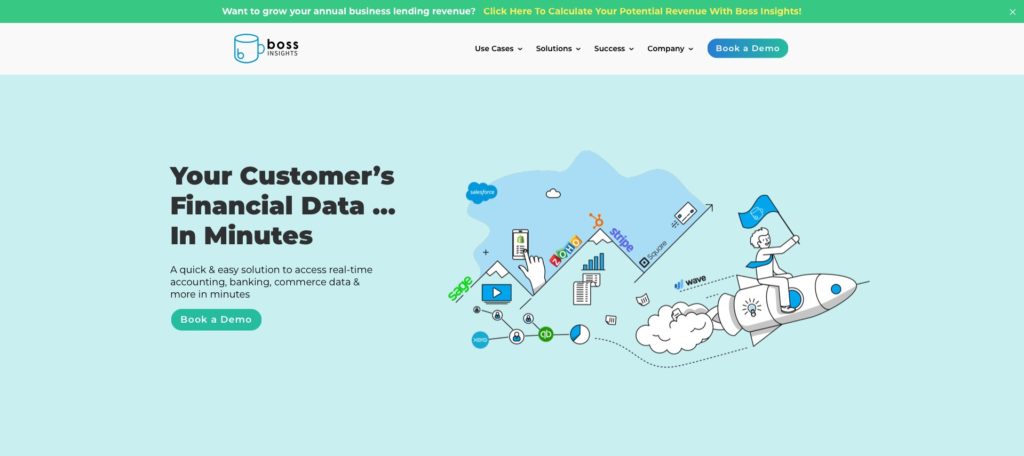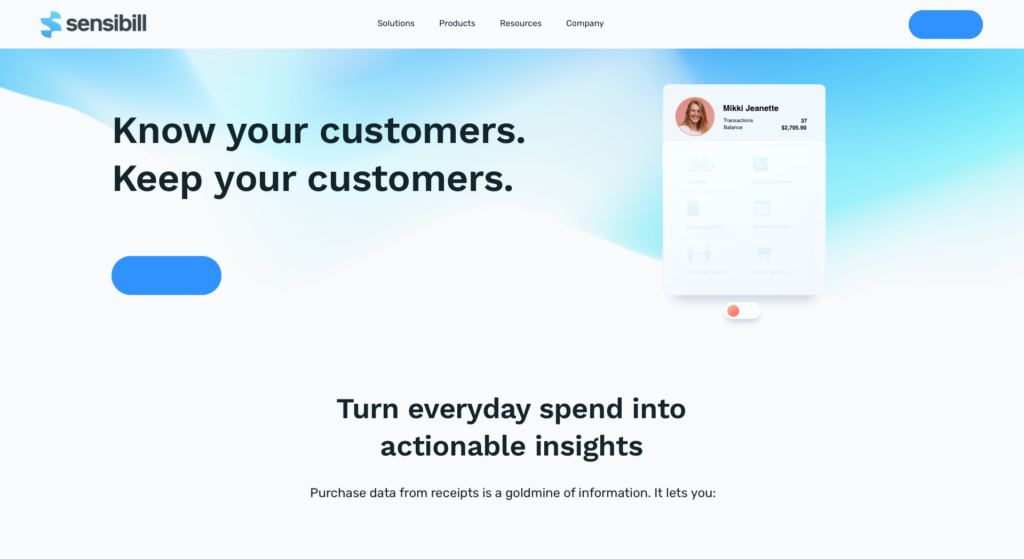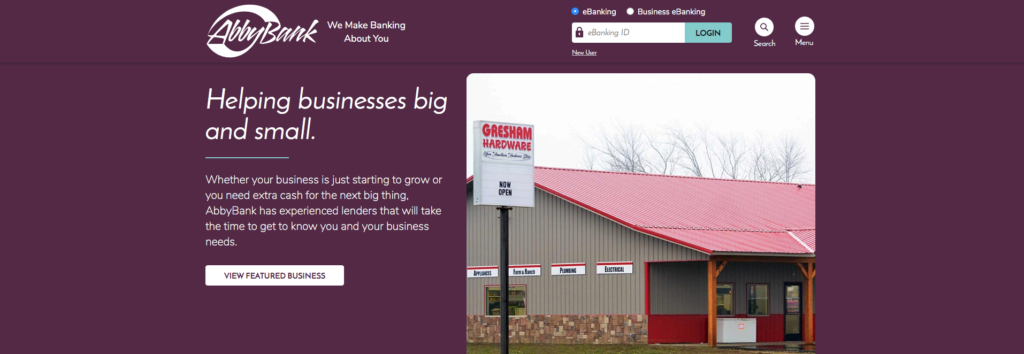
Earlier this year in our conversation on diversity in fintech and financial services, we looked at a partnership between Paybby, a challenger bank focused on Black and Brown communities; Carver Federal Savings Bank, an African-American owned bank; and Finovate alum Boss Insights.
Today, we pick up that conversation from the fintech’s perspective, talking with Boss Insights founder and CEO Keren Moynihan about her company’s innovations in the field of business-data-as-a-service, its participation in the Paycheck Protection Program, and the importance of impact and meaning when it comes to providing financial services.
Boss Insights specializes in Business Data as a Service. What does this mean?
Moynihan: We work with fintechs and private lenders, banks, and credit unions. We work with their business lending groups; it could be small and medium business lending, SBA, invoice factoring, commercial, all sorts of business lending types. And what we are giving the lenders is access to their business customers’ financial data in minutes. It sounds impossible, but actually only takes the lenders one hour of their time to set up.
What we’re enabling is for them to be able to pull real-time accounting information, banking, or commerce information on demand.
When you look back on 2020, what are your biggest takeways?
Moynihan: In March 2020 I was speaking with (a reporter) at a conference and she asked for a direct quote responding to “how are fintechs and entrepreneurial companies going to be responding to COVID?” And I’ll never forget it because I said, “Look, fintechs thrive on challenges and this is an unprecedented challenge but we will be looking at ways to respond to it.” Two hours later, we all got an order that the economy was going to shut down, that we were all going to isolate. I don’t think anyone knew what was happening. I called the reporter and said “I know what I said, but …” I knew I was going to eat my words, because this was on another level. She laughed and said, of course, and she appreciated my call.
That was more than a year ago. The next two weeks were an onslaught. This was before PPP. This was before any kind of government funding and people really did not know what was happening. And unless you were in it, it’s really hard to describe it. What we did as a company was that we saw in all the news articles there wasn’t enough personal protection equipment, we started to get reports out of Italy, it was a really scary time. Now people at Boss Insights could not create masks. But we did see that if you stopped a company from being able to make sales, they are not going to be able to say alive and to be able to grow.
I asked myself, how do you support the economy? Right away we said we will offer part of our technology for free for any lenders who will support new businesses. And by new businesses, I meant new business relationships with the lender. That is a harder uplift. And as a result of that, everything started to grow for us. Technology companies reached out. Banking companies reached out. We were covered in an industry journal and, as a result of just that one piece, we had so many people call us. And we learned so much just by being able to say we can help.

How much of what you’ve learned will you be able to translate into new initiatives and future growth?
Moyinhan: There are a lot of things that I see changing, and then there’s an even bigger category of things I wish would change and hope will change. And time will tell. One word, very overused, is digitization. That’s going to endure. CB Insights reported that banks were losing about 1% market share each year, so give or take 9% or 10% over a nine year period. In 2020, 9% was lost in one year. A couple more years like that and we’re looking at a very different economy.
That really made the industry stand up and take notice. Back in March 2020, the same lenders that were telling me that they had everything under control and were ready to go, were the same ones that admitted to me on private calls that they were placing orders for laptops at Costco. They literally could not get laptops from regular commercial suppliers and were ordering them from Costco because they couldn’t get them anywhere else.
This points to one trend: people were a lot more honest about where they were (in terms of digital transformation) because you couldn’t just say you had digitized, it was actually being tested. I believe that trend is going to endure because the expectations of people, of businesses, have changed. We all ordered groceries online for awhile. I don’t think that was true before 2020. We are all expecting that these documents and forms that you have to go into branches for will be available online.
That is the biggest thing I can say that has changed. The one thing that I hope will change is the collaboration. We put out something in the American Banking Association saying that social distancing led to social collaboration. What I mean by that is that people stopped talking and they started listening. This includes Boss Insights. We stopped talking about what we’re selling and we started just asking “what do you need?” And I do hope that trend continues. It’s mirrored in other areas outside of financial services. We think these things were long overdue. It’s not a trend that is continuing in the way that I would have hoped. But I do see a lot of changes and this issue surfaced in the second round of PPP. People were open to having conversations. They brought decision-makers in the room. People didn’t want to have high-level discussions. They wanted to clearly tell you “I need this. Can you get it for me?” Then it’s our turn to talk about what we can do.
That amount of collaboration is unprecedented before COVID, and we just hope that it continues.
Tell us about the importance of working with small business owners who struggled to access support from relief programs like PPP.
Moyinhan: In the middle of PPP I was on a podcast called The Powerful Ladies podcast and it was with Kara Duffy. All of this got arranged because of Sharifah Hardie, who also runs a podcast and we had been on her podcast also. There was a woman there named Ronda Brunson. She has a consulting practice where she works with people to educate them on financial health, people who would not necessarily have had that training. We learn a lot of things in school, but financial health is not one of them, and if you have not had that education elsewhere where are you going to get it? She empowers people.
As I’m listening to all of these incredibly accomplished women and what they do in their business lives, she heard what I was doing. I was a little bit the oddball out because I was working with businesses and everyone else was working with individuals. She said, “I hear what you do, but the first round of PPP got a little bit of social notice because it’s supporting large businesses.” The second round of PPP did correct for this. But at that time we didn’t know that was going to happen. She said “how are you actually working to get capital into the hands of people who wouldn’t get access to it?”
I knew exactly what she meant. I knew that she meant people who were either female-run companies or visible minority-run companies. She didn’t say it explicitly, but that was exactly what she meant because those were the people that she was working with on a daily basis.
The way the lending industry works is that it’s based on a percentage of the amount of the loan. Everything is based on that. The costs are the same whether the loan is two million dollars or $200,000 – so who’s going to get more resources? It’s not that banks and credit unions and private lenders are trying to do it this way, it’s that the costs don’t scale down but the revenue does. What I saw from banks at that time is they were working until two or three in the morning. What I’ve heard from the CEO of Carver Bancorp, Michael Pugh, is that he’s been on the phone with clients to get their documents in – which people couldn’t believe, but this is the dedication. And what (Brunson) was asking me was: “what exactly are you doing to ensure your technology gets in the hands of people who will make sure that the disenfranchised will get access?”
And I never forgot it and I started looking immediately. Because for the people at Boss Insights, it is about accelerating business lending from months to minutes. But it’s also about impact and meaning and making sure businesses are evaluated on their merit. It is because of Paybby that we got connected to Carver. And it is because of Paybby and Carver that we are in a position to answer her and say, Ronda, now I can tell you we are doing something.
In some ways, we just started listening. We listened for when the SBA announced that there was going to be a week in advance for lenders focused in this area. And we listened when Paybby said “we have a lender who is ready to do this uplift.” And the collaboration that Paybby and Carver and Boss Insights have is a daily investment to make sure that things are running smoothly so businesses can apply.
Read more about the partnership between Paybby, Carver Federal Savings Bank, and Boss Insights.
Photo by Davyd Bortnik from Pexels
























